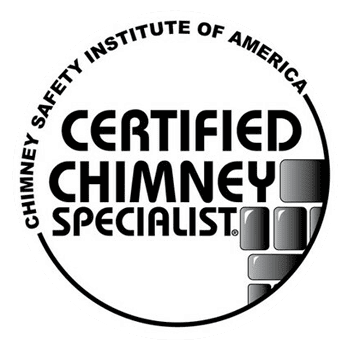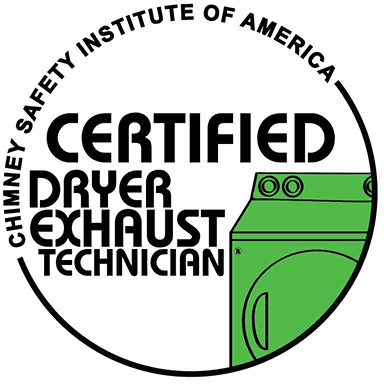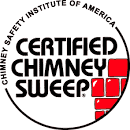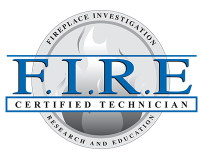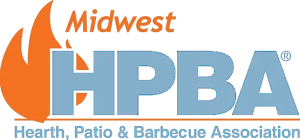Significant indicators of needed chimney masonry repair often include deterioration in the form of cracked, missing, or crumbled bricks, noticeable stains or discoloration, or compromised structural integrity. A poorly maintained chimney can lead to problematic leakage, blockage or even fire hazards. Regular professional assessment and timely repair strategies avoid escalating costs and potential safety issues associated with neglect. Adherence to building codes through scheduled maintenance also plays a fundamental role in securing the health of your chimney masonry. Understanding these signs in more depth would help protect and extend the lifespan of your home’s chimney.
Understanding Chimney Masonry Damage
A significant proportion of homeowners often overlook the underlying issues of chimney masonry damage, which can range from minor cracks in the bricks to severe damage in the interior clay flue liner and dangerous creosote buildup. The extent of such issues may not be immediately apparent. However, both minor and major chimney masonry damages can lead to costly repairs if not promptly addressed. Chimney masonry repair is a crucial aspect of home maintenance that ensures the safe and efficient operation of the chimney. The repair process often involves the inspection and assessment of the masonry, identification of damage, and the application of appropriate repair methods. These may include the repointing of damaged mortar joints, replacement of cracked or broken bricks, and the installation of flue liners to protect the interior of the chimney. It’s essential to understand that chimney masonry damage is not solely an aesthetic issue. It can also pose serious risks to the structural integrity of the chimney and the safety of the home and its inhabitants. Therefore, regular inspections and timely chimney masonry repair are necessary to maintain the longevity of the chimney and the safety of your home.
Risks of Neglected Chimney Maintenance
Neglecting regular chimney maintenance can lead to serious consequences, including structural damage to your home and, in worst-case scenarios, catastrophic chimney fires. An ill-maintained chimney can become a real liability, especially if the masonry has been compromised. The gradual accumulation of creosote, a byproduct of wood burning, can cause an intense fire that the chimney isn’t designed to withstand. Without regular maintenance, the structural integrity of your chimney can be affected. Over time, cracks may appear in the bricks or mortar, allowing water to seep in and cause further deterioration. This not only increases the need for chimney repair but can also lead to water damage in your home. In addition to the risk of fire and structural damage, neglecting chimney maintenance can also pose serious health risks. Poorly maintained chimneys may not vent properly, leading to the buildup of dangerous gases, like carbon monoxide, in your home. It is essential to understand that chimney repair is not just about fixing a cosmetic feature of your house. It’s about ensuring the safety and integrity of your home. Regular maintenance is an investment in your property and your family’s well-being.
Early Warning Signs of Damage
Recognizing the early warning signs of damage to your chimney can help prevent costly repairs and potential safety hazards. One such sign is the deterioration of the mortar joints, which if neglected, could lead to the chimney collapsing. This is often caused by water damage, a common enemy of masonry.
Water can penetrate the masonry and cause it to crack, especially during the freeze and thaw cycle of winter. Similarly, another indication of water damage is the presence of rust on the firebox or damper. Rust is a clear sign that water is seeping into your chimney, and immediate action should be taken to prevent further damage. Spalling is another early warning sign of masonry damage. This is when bits of masonry start popping off the chimney, caused again by water penetration. Spalling can lead to the masonry material breaking down, and if left unchecked, can result in the chimney falling apart.
Why Timely Masonry Chimney Repairs Are Crucial
Understanding these early warning signs underscores the importance of timely chimney repairs, as delays can exacerbate the damage and lead to more severe consequences. Procrastination can allow minor issues such as small cracks or creosote buildup to escalate into more serious problems like structural instability or even a chimney fire. Timely repairs, such as chimney cap repair, are crucial to maintain the structural integrity of your chimney and to ensure your home’s safety. A damaged chimney cap can allow water to infiltrate, causing deterioration of the masonry and leading to costly repairs. Moreover, a faulty chimney cap can allow sparks to escape, posing a potential fire hazard. Professional and timely chimney repair is also essential to prevent carbon monoxide poisoning. Often, damage to the masonry can cause blockages or leaks, preventing the proper venting of this lethal gas. Prompt attention to chimney repairs is also a cost-effective strategy. Addressing issues as they arise prevents minor problems from developing into large, expensive repairs or replacements. Hence, understanding the signs and acting swiftly can save not only your chimney but also your home and potentially, your life.
Effective Chimney Repair Strategies
Implementing effective chimney repair strategies is paramount to maintaining the integrity and safety of your home. Beginning with the identification of common signs that indicate the need for masonry repair. This involves proactive measures such as the prevention of chimney fires, preparation and safety measures, and specialized repair techniques. Efficient chimney repair begins with preventing chimney fires. Cracks in the brickwork can cause these fires, and therefore, a masonry contractor should install metal flue liners to mitigate this risk. Preparation is also crucial. It includes checking local permitting requirements, ensuring safety measures like using a fall-arresting harness, and a thorough examination of the chimney before work commences. Furthermore, employing effective brick mortar repair techniques is also essential. This entails repointing the brick mortar, preparing the surface, and using the right materials. Where cracks are present, the right repair techniques should be utilized. This could range from patching hairline cracks with masonry sealer to replacing severely damaged bricks.
Advantages of Regular Chimney Maintenance
While employing effective repair strategies is of utmost importance, it is equally beneficial to maintain a regular chimney inspection and maintenance schedule to prevent potential issues from escalating. Regular maintenance can effectively prolong the lifespan of your chimney, reduce the risk of dangerous incidents such as chimney fires, and save you significant repair costs in the long run. Firstly, regular maintenance enables early detection of faults, including cracks in the brick, which could lead to devastating chimney fires if left ignored. It provides an opportunity to address these issues promptly and prevent them from worsening. This proactive approach can prevent the deterioration of the brickwork and increase the overall lifespan of your chimney. Regular maintenance reduces the risk of creosote buildup, a common cause of chimney fires. By ensuring the bricks and flue of the chimney are clean, you minimize potential fire hazards, making your home safer. Lastly, regular maintenance can save you substantial repair costs. Issues that are detected and addressed early are often less expensive to fix than those that have been allowed to escalate. Therefore, regular chimney maintenance is a cost-effective strategy for maintaining the structural integrity of your chimney and ensuring the safety of your home.
Hiring Professional Chimney Services
Despite the benefits of regular maintenance, certain chimney problems extend beyond minor repairs and require the expertise of professional chimney services. A deteriorating chimney can lead to severe issues, such as a blocked or damaged chimney flue, which could result in dangerous carbon monoxide leakage into your home. A Professional chimney sweep, like Chimney Restoration of Kansas City possess not only the experience, but also the proper equipment to handle complex chimney masonry repair. They are trained to diagnose and fix problems related to the chimney flue, ensuring the safe and efficient operation of your heating system. They can spot subtle signs of damage that may be missed by an untrained eye, and their services usually include a comprehensive inspection of the entire chimney system. Hiring professional chimney services also saves you from the risks associated with DIY repairs, such as improper handling of equipment or exposure to harmful substances. Moreover, professionals are aware of local building codes and regulations, ensuring that the repair work complies with these guidelines.
Kansas City Chimney Masonry Repair Service Provider
Awareness of chimney masonry damage signs and engaging in timely repairs is crucial for home safety and longevity. Utilizing professional chimney services offers advantages in expertise and adherence to safety guidelines from the NFPA and CSIA. Regular inspections and maintenance help prevent serious risks, including structural instability and fire hazards. Homeowners are thus urged to prioritize chimney masonry maintenance to safeguard the integrity of their homes and the safety of their families. For more information on our services, visit: https://chimneyrestorationofkc.com/contact-us/
Frequently Asked Questions
What Are the Effects of Weather Conditions on Chimney Masonry?
Extreme weather conditions, particularly freeze-thaw cycles, can cause significant damage to chimney masonry. Moisture seeping into the bricks can freeze, expand, and cause cracking or spalling, necessitating prompt professional repair to prevent further structural damage.
How Can I Identify Hidden Chimney Cracks or Damage?
To identify hidden chimney cracks or damage, conduct regular inspections for signs such as efflorescence, spalling bricks, cracked or deteriorating mortar joints, and damaged flue liners. For a thorough examination, consider hiring a professional chimney inspector.
What Are Common Causes of Creosote Buildup in Chimneys?
Common causes of creosote buildup in chimneys include insufficient air supply, burning unseasoned wood, and cooler than normal chimney temperatures. This buildup can lead to chimney fires and should be addressed promptly by a professional.
Are There Any DIY Methods for Chimney Maintenance and Repair?
Yes, there are several DIY methods for chimney maintenance and repair. These include repointing brick mortar, patching hairline cracks with masonry sealer, replacing damaged bricks, and caulking around the flue to prevent water damage.
How Often Should the Metal Flue Liners Be Replaced?
Metal flue liners generally have a long lifespan and don’t necessitate frequent replacement. However, it’s advisable to have them inspected annually by a certified professional to check for any signs of damage or wear.



